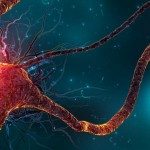Send your CV along with a motivation letter to chloe.lehoucq@pasteur.fr with benjamin.devauchelle@pasteur.fr in Cc.
The candidate should have a PhD in Neuroscience or Cognitive science and the following skills:
- Strong interest in the field of neuroimaging, psychiatry and genetics.
- Computer skills: Strong level in the main informatics software (FSL, Freesurfer, fMRIprep) and coding languages (R, Python, Bash).
- Good level on machine learning.
- Good level of written and oral English.
- Ease in a multidisciplinary environment, taste for teamwork, interpersonal skills.
- Scientific curiosity, methodological rigor.
Title of the project: Genetics of brain diversity in autism
Laboratory: Human Genetics and Cognitive Functions Unit (dir. Thomas Bourgeron)
Duration of the contract: 2 years
Aim of the laboratory: Our laboratory is part of the Neuroscience Department of the Institut Pasteur and gathers psychiatrists, neuroscientists and geneticists to understand the causes of autism. We previously identified the first mutations in the NLGN-NRXN-SHANK pathway, which has a key role in synapse formation within the brain. Our results highlight the genetic heterogeneity of autism, but also point at common biological mechanisms that could constitute relevant targets for new treatments. We are leading the genetic work package of AIMS-2-TRIALS, the largest European project on autism research. The project is focused on deep-phenotyping of individuals with autism and controls including brain imaging (MRI, fMRI, DTI and EEG) and a battery of cognitive tests. Our group is currently developing new methods for analyzing whole genome and brain imaging data as well as new paradigms for characterizing mouse social and vocal behaviors.
Role of the Postdoctoral fellow: She/he will analyze brain imaging and cognitive data from different groups of individuals with autism or neurodevelopmental disorders (R. Debré pediatric parisian hospital, n=1000) and controls from the general population (UK Biobank). She/he will analyse the data to study the relationship between genetic variants associated with autism and brain development (analysing anatomical and functional connectivity data).
Examples of papers from the laboratory:
–Lefebvre A. et al. Neuroanatomical Diversity of Corpus Callosum and Brain Volume in Autism: Meta-analysis, Analysis of the Autism Brain Imaging Data Exchange Project, and Simulation. Biol Psychiatry 2015; 78: 126–34.
–Moreau C.A. et al. Atlas of functional connectivity relationships across rare and common genetic variants, traits, and psychiatric conditions. 2021: http://medrxiv.org/lookup/doi/10.1101/2021.05.21.21257604
–Moreau C.A., Urchs SGW, et al. Mutations associated with neuropsychiatric conditions delineate functional brain connectivity dimensions contributing to autism and schizophrenia. Nat Commun 2020; 11: 1–12.
-Leblond C.S. et al. Both rare and common genetic variants contribute to autism in the Faroe Islands. NPJ Genomics Medicine. 2019 Jan 21;4:1.
-Huguet G. et al. Measuring and predicting the effect of copy number variants on general intelligence in community-based samples. JAMA Psychiatry 2018 75(5):447-457.
–Bourgeron T. From the genetic architecture to synaptic plasticity in autism spectrum disorders. Nature Reviews Neuroscience (2015) 16, 551–563




